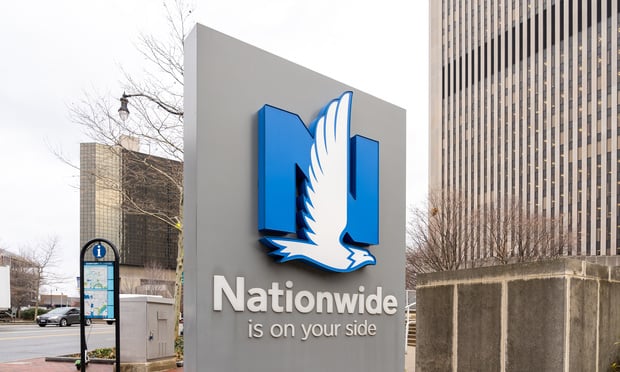Since its beginning in the ancient days of China and Babylon, the insurance industry's business model, along with its customer service practices, did not change drastically throughout its history.
Because of its complex nature, the industry stuck to known methods and used a mixture of older approaches in running business rather than progress with fresh, new approaches.
Then the internet arrived, and the way people and businesses interacted with each other changed forever — except for insurance.
Held back by the steady expectations of traditional insurance customers, the industry didn't enter the digital age very quickly. But as time progresses, and the more traditional generations age, a different, tech-savvy target group of customers is putting the pressure on insurance brands to meet their customer service needs in the way they want. This means that insurance companies are finally on a gradual climb toward entering today's world of omnichannel customer engagement.
After observing and studying the unique characteristics of millennials, insurance companies can take measures to enter their world. And as with any venture into a foreign land, insurance must learn this generation's way of communicating. There are a few brands that have figured out the best ways to engage with today's customer. What can other insurance brands learn from them?
Here are 11 tips for insurance companies looking to meet the needs of the modern customer:
11. Online account management
Young people today often prefer the anonymity of researching online for insurance that matches their way of life. To align with their preferences and expectations, insurance companies are implementing online account management as a primary source of contact with their customers. In fact, there are now several online-only insurance companies rising in the ranks because of their forward-thinking customer engagement mindset, providing easy-to-understand guidance and quick and easy procedures.
10. Self-service
Customers want to know that a brand values their time. Therefore, self-service should be offered to those visitors who don't want to wait on hold or who want to simply go into their account and complete a task on their own. This mode of customer experience is especially effective on mobile devices, where a customer can have access to their account anytime or anywhere.
Related: It's time to offer omnichannel service

Touchtone and speech Interactive Voice Response (IVR) might have been "good enough" in the past, not anymore. (Photo: iStock)
9. Conversational Interactive Voice Response
New, conversational IVR systems improve the caller experience and reduce the time people spend on the phone by allowing people to simply say what they want in their own words to get them to the information they need, and by directing them to the right information from the start. Conversational IVR engages callers using intelligent conversation, such as: "Welcome back, Jim. Are you calling about the order you placed yesterday?"
Related: Going digital? Here's how to keep a personal connection with clients
8. Live chat
When it comes to the complex nature of insurance, there may come a time when the insurance customer encounters a question while self-serving. Fortunately, live chat marries well with self-service when a seamless transition is in place. Business rules can be set up to trigger a proactive invitation to chat when there are signs that the customer needs help. Not only will the customer receive instant contact with an agent who can assist them, but live chat is still in that mode of communication that modern customers prefer (online).
7. Virtual assistance
The trend toward automated conversations reveals how customer expectations have evolved into the desire to remain tech savvy and independent yet with the personalization of a two-way conversation. Virtual assistants take the insurance customer through a self-serve experience by answering natural language questions for simple matters. Then, if the customer's issue needs further assistance, the conversation can be seamlessly transitioned into a live chat engagement with a real person.

Today's insurance consumers are social (media) animals. (Photo: iStock)
6. Social customer service
Insurance brands can make themselves available to customers anywhere, anytime by being present on social media platforms. Modern customers like to consult their social peers when a question arises, and if the brand is tagged in their posts, it can seize the opportunity to engage and invite the customer to a more private setting of live chat.
5. Mobile chat
Making live chat available to all customers on any device is a sign that an insurance brand understands customer expectations of immediacy and convenience. Therefore, implementing live chat on mobile devices would give a customer access to live help whenever and wherever they need it (for example, in the doctor's office or stranded on the side of the road).
Related: Digital transformation can help insurers keep customers loyal
4. SMS chat
SMS chat takes mobile chat a step further in helping the customer to keep track of an ongoing conversation with their insurance company. SMS puts correspondence of pressing issues at the tip of the customer's fingers, allowing them to deal with insurance matters while tending to other tasks throughout the day.

Updated customer communications are essential to modernizing an insurance brand. (Photo: iStock)
3. Embrace an omnichannel world
Yes, these various channels of engagement create a field of multiple touchpoints of which the company has to keep track. That's why it's important to bring them all together into one omni-channel platform. This consolidated view enables the brand to manage and analyze customer data for continued improvement and personalization. It also empowers customer representatives with knowledge of each customer's journey, enabling them to effectively serve and satisfy the customer's expectations.
2. Live, personal help — anytime, anywhere
Make no mistake — an insurance brand that is moving toward a digital environment as their dominant presence is not a company that has forgotten the personal nature of their industry. They're not saying goodbye to the human aspect of caring for customers with insurance needs. It's quite the opposite. For many consumers, navigating the insurance world can be like watching a foreign film without subtitles. Live chat, social customer service, and mobile messaging can provide help to the customer in their hour of need – giving personal, real-time communication without the customer waiting on hold.
1. Embrace technology
So, insurance brands should embrace the technological innovations that have advanced customer engagement into the future. If the brand is already there, waiting for its customers when they seek help (or even proactively providing engagement opportunities before they need help) it has removed a barrier to a possible reluctance to deal with insurance matters. Customers like to feel that their insurance company is not out of touch with modern times. The reality is that customers expect instant gratification but insurance is complex. The right blend of self-service and assisted online experience answers both of those concerns.
Related: Match your marketing goals with the correct technology
George Skaff is vice president of worldwide marketing for the Enterprise Division of Nuance Communications, a leading provider of voice and language solutions for businesses and consumers.
Want to continue reading?
Become a Free PropertyCasualty360 Digital Reader
Your access to unlimited PropertyCasualty360 content isn’t changing.
Once you are an ALM digital member, you’ll receive:
- Breaking insurance news and analysis, on-site and via our newsletters and custom alerts
- Weekly Insurance Speak podcast featuring exclusive interviews with industry leaders
- Educational webcasts, white papers, and ebooks from industry thought leaders
- Critical converage of the employee benefits and financial advisory markets on our other ALM sites, BenefitsPRO and ThinkAdvisor
Already have an account? Sign In Now
© 2025 ALM Global, LLC, All Rights Reserved. Request academic re-use from www.copyright.com. All other uses, submit a request to [email protected]. For more information visit Asset & Logo Licensing.








